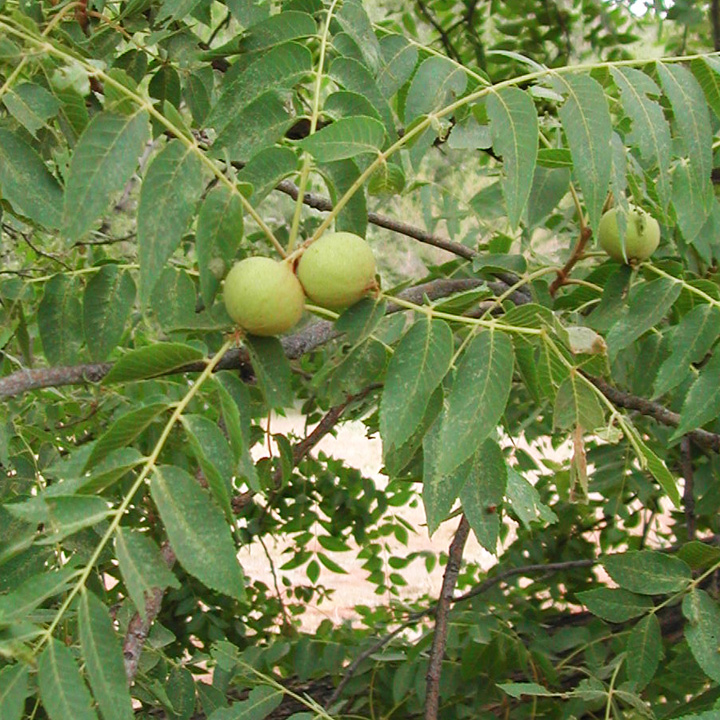- Home
- Search
- Images
- Datasets
- Sample Use
- How to Cite
- Additional Information
- About NEON
- NEON Data Portal
- ASU Biocollections
- About Symbiota
|
Juglandaceae |
|
|
Trees, rarely shrubs , deciduous, with gray or brownish bark. Terminal buds larger than lateral buds. Leaves alternate [or opposite], aromatic, usually odd-, rarely even-, pinnately compound; stipules absent; petiole present. Leaflets 3-23, margins serrate or entire. Inflorescences: staminate catkins solitary or fasciculate, pendulous, elongate, on reduced shoots arising on branches of previous year or at base of current year's growth; pistillate catkins solitary or few-flowered spikes [or many-flowered racemes]. Flowers unisexual, staminate and pistillate on same plants; bract 1, bracteoles (0-)2. Staminate flowers: calyx 2-6-lobed or absent; corolla absent; stamens 3-50; filaments very short or absent; anthers usually pubescent. Pistillate flowers: calyx 4-lobed or absent; corolla absent; ovary 1, inferior, usually 2-carpellate, 1-locular distally; ovule 1; stigmas 2, fleshy or plumose. Fruits large nuts [or samaras], nuts enclosed in dehiscent or indehiscent, fibrous-fleshy or hard involucres (husks), thus ± drupelike. Seeds 1; endosperm absent; cotyledons fleshy and oily, variously lobed. The fruit in Juglandaceae superficially resembles a drupe, with a hard 'stone' surrounded by a soft, often fleshy husk. The husk, however, is not part of the fruit wall (it develops from the involucre and calyx), and the fruit is actually a nut (T. S. Elias 1972; W. E. Manning 1978). The morphology and classification of the family were discussed by W. E. Manning (1978). The female inflorescences and fruits show considerable variation in Latin American and Eurasian taxa.
PLANTS: Monoecious, rarely dioecious, trees or occasionally shrubs. STEMS: with solid or chambered pith, leaf scars large, with three groups of bundle scars. LEAVES: alternate, rarely opposite or whorled, pinnate, deciduous or evergreen, estipulate, often aromatic. FLOWERS: wind-pollinated, bracteate; staminate and pistillate flowers in separate erect or pendant catkins or spikes, or in androgynous panicles; sepals 0-4; petals 0; stamens 3-105, sessile; anthers oblong, longitudinally dehiscent; pistil with 2(-4) carpels; ovary inferior, l-ovulate but often with partial internal partitions and appearing 2-4-loculate in section; ovule 1, erect; style (0-)1, with 2-4 stigmatic branches. FRUIT: a drupe-like nut, with a fibrous, slightly fleshy husk derived from the involucre and calyx; husk dehiscent or indehiscent. SEED: solitary, 2-lobed, with large, fleshy, oily cotyledons, lacking endosperm at maturity. X = 16. NOTES: 7 genera and ca. 60 spp. of the North Temperate Zone and the Andes. REFERENCES: Laferriere, Joseph E. 1994. Juglandaceae. J. Ariz. - Nev. Acad. Sci. Volume 27, 219. |
|

